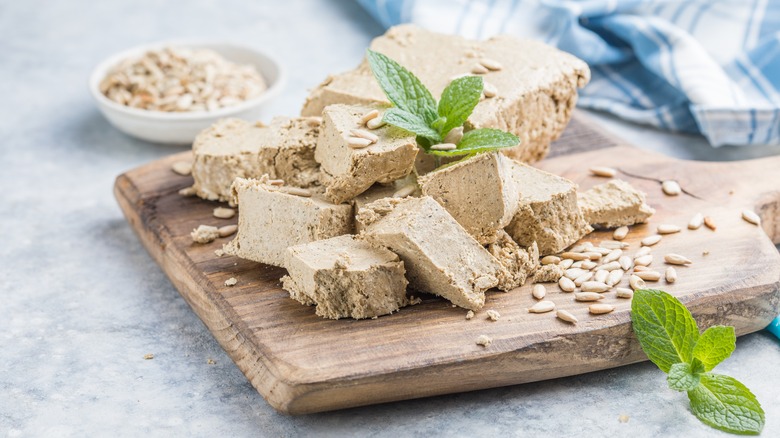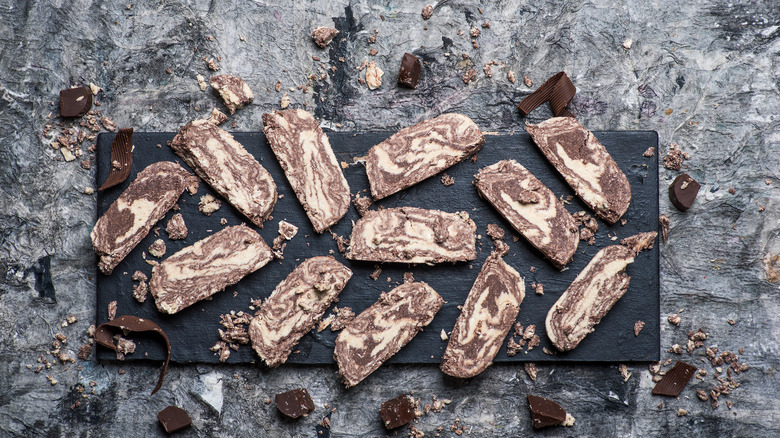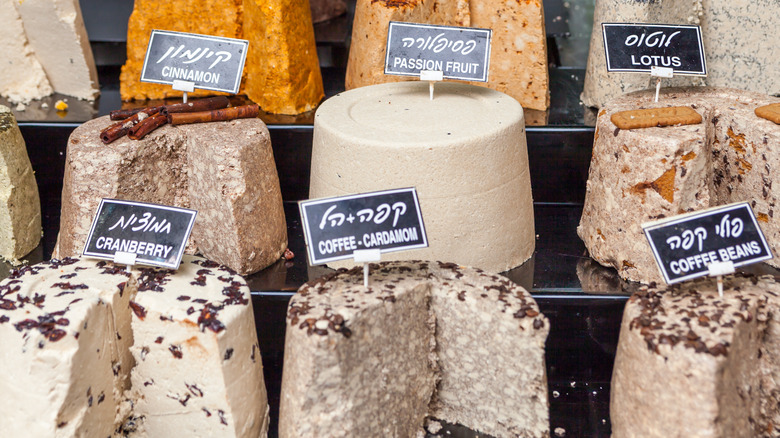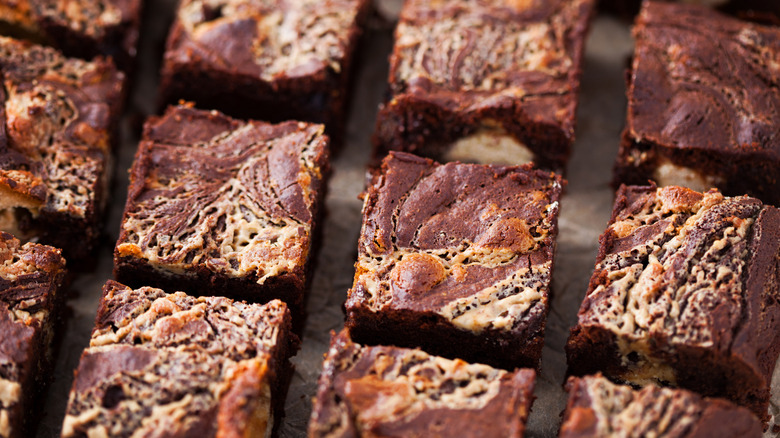What Is Halva And How Is It Best Used?
If you've recently discovered halva, congratulations. This crumbly confection is a great way to enjoy a sweet treat and is popular in many places around the world. What is halva exactly, though? At its simplest, halva is a dense, loaf-style dessert most commonly made from a base of sesame seeds.
Halva (also spelled as halawa and halvah, among others) is thought to have originated in the eastern Mediterranean region and has left its mark in countries like Turkey, Greece, Lebanon, and even as far as India. The reason for its widespread presence and murky beginnings is due to it being absolutely ancient, with evidence of its existence dating back as far as 3000 B.C. As such, it is no surprise that this storied sweet consists of a minimalist set of ingredients. In its purest form, it can be made by mixing tahini, a paste of ground sesame seeds, with heated sugar syrup and allowing it to cool to form a solid block. The block is then sliced into smaller sections for serving.
What does halva taste like?
For those who haven't tried it, halva has a one-of-a-kind flavor and texture that is well worth experiencing. Basic halva has a slightly sweet, nutty flavor with a hint of bitterness at its finish, which is very characteristic of the tahini paste that is its base. Its texture is dense yet crumbly, with the candy having a tendency to come apart in shards as you eat. Once bitten into, halva has a smooth and creamy mouthfeel that slowly dissolves on the tongue.
Halva's flavor can change drastically depending on its regional variations and culinary additions. Every culture that enjoys the treat has a different take on its creation — some even go so far as to swap the tahini out for semolina flour or other types of nuts. Many modern halva makers enjoy experimenting with untraditional flavors as well, from coffee to dark chocolate sea salt.
Where to find halva
Halva is relatively easy to find if you know where to look. Versions of the confection are carried at most common grocery stores, including Walmart, Kroger, and Whole Foods. It is most often found on the shelves of the international foods aisle, but this can vary based on individual locations. When in doubt, ask an employee to help you navigate to the right area.
The halva found at mainstream grocery stores is perfectly acceptable if you value convenience. For the highest quality halva, however, it is recommended to look to small local businesses or specialty vendors. Middle Eastern, Mediterranean, and Indian grocers often sell halva, as well as some Jewish delis, since the treat is significant in Jewish culture. If none of these options are in your area, companies like Hebel & Co. and Seed & Mill have online storefronts and are highly regarded for their authenticity and freshness.
How to use halva in cooking
Traditionally, halva is enjoyed on its own or with simple toppings. Popular options are dried fruit, chopped nuts, whipped cream, or ground spices like cinnamon. In modern times, however, it has itself been used as an ingredient or topping in many different baked goods and other desserts.
Creative modern uses for halva run the gamut from honey halva biscotti to creamy halva spread. It can be crumbled into dessert bars or stirred into cookie dough to add a toasty flavor and a unique textural element. Those who prefer their sweets cold can also try halva broken up over ice cream or blended into a milkshake for an ultra-creamy, slightly savory treat. It also serves as an abstract decorative element atop frosted cakes and pastries, which then melts in your mouth rather than poking your gums as spun sugar and candy melts tend to do.



